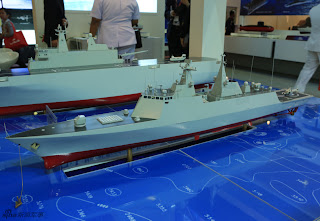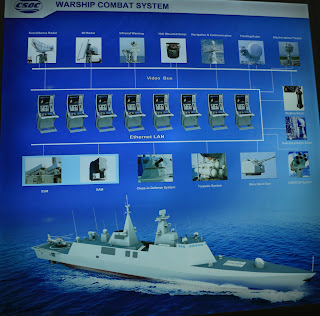Spot on.
The Pakistan Navy is being tuned for anti-access and area-denial (A2/AD) duties so as to safeguard Pakistan's coastlines and defend our valuable economic assets in the vicinity (e.g. port cities, shipyards, etc). It isn't ideal considering that the Navy wanted to expand to a more traditional role - i.e. patrolling and guarding the sea-lines-of-communication (SLOC) in war time.
However, the requisite surface combatants to achieve that in proper terms (especially in light of the enhanced anti-air warfare or AAW profile) would not come cheap by any measure. Furthermore, Pakistan only has eight or nine ships within its own merchant navy, so it is not as if there is a pressing need to guard our SLOC in times of war, not unless the Gulf Arab states want to send their own trading ships past a certain Indian blockade. In effect, the SLOC aspect is a non-factor in war, and strategically speaking, Pakistan could offset the impacts of an Indian naval blockade by further tuning its economy to focus on the Central Asian and Russian markets.
The eight Chinese submarines - which are probably AIP-equipped S20s - are absolutely nothing to scoff at. For one thing, we should be aware that the Chinese have been working on several distinct programs, including fuel-cell AIP technology at Dalian. With Pakistan being among the launch clients of China's modern submarine designs, I imagine a concession was made to enable Pakistan to access China's AIP technology. Alternatively, Western AIP may also be a possibility, though unlikely (not impossible considering our F-22P use German propulsion).
In any case, few navies in the world - much less the Arabian Sea - can field 11 AIP submarines. Combined with the FAC force (Azmat and MRTP-33) as well as the coastal AShM network, the Navy should be able to guard the coastline fairly well. The JF-17 squadron (hopefully *squadrons* in the near future) posted along the coast offer close proximity air coverage for those assets as well.
Long-term, I do wonder if we will see a more traditional naval development track. Granted, Pakistan's tiny merchant navy does not really warrant it at this time, but with CPEC, this may change in the coming decades. Moreover, if Pakistani foreign policymakers one day succeed in securing markets in Africa, and that too with Pakistani trading ships playing a key role, then a SLOC-centric Navy will become a necessity. But this is abstract thought.
Near-term, the SLOC element will probably focus on the procurement of corvettes or light frigates (i.e. 2,000 to 3,000-ton) - such as the Turkish MILGEM - as a means to develop an efficient surface combatant arm to (1) engage in peace time SLOC policing and security duties and (2) double down the A2/AD element in war-time. The advances in AAW technology (via compact active-guided SAM) would enable even small surface ships to have credible medium-range AAW coverage, which could be helpful for Pakistan's submarine fleet against enemy MPA assets. All eyes are on the proposed STM corvette program with Turkey.















